
Come acquistare gemme su Internet
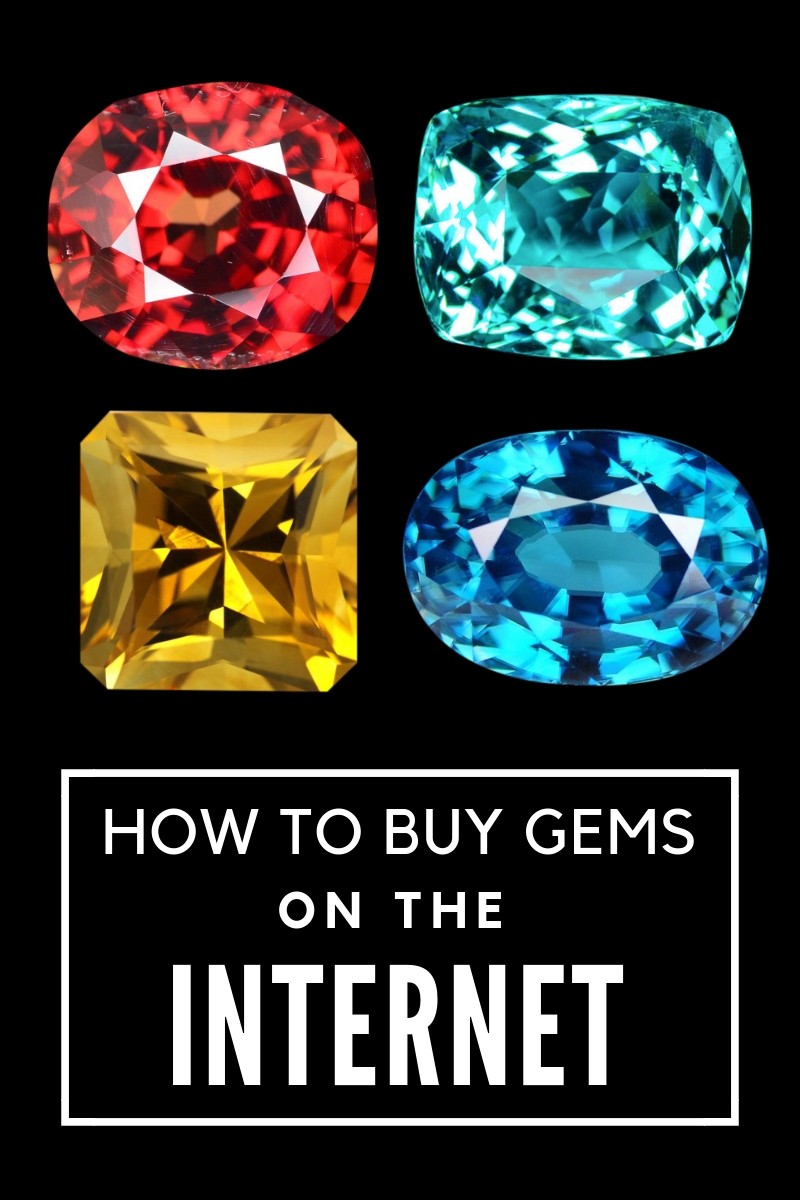 Gem Rock Auctions crede fermamente nell'importanza di fornire quante più informazioni possibili per consentire agli acquirenti di effettuare un acquisto consapevole di tutte le pietre preziose e semipreziose.
Gem Rock Auctions crede fermamente nell'importanza di fornire quante più informazioni possibili per consentire agli acquirenti di effettuare un acquisto consapevole di tutte le pietre preziose e semipreziose.
Il nostro obiettivo è quello di offrire la più ampia selezione di pietre preziose certificate online e, cosa importante, i nostri venditori devono dimostrare di possedere competenze professionali e di essere membri di un'organizzazione di categoria.
La nostra unicità sta anche nel fatto che disponiamo di un Gemstone Advisory Panel e di un Gemstone Sheriff, tutti guidati da gemmologi accreditati. Nessun altro sito online offre questo tipo di assistenza clienti.

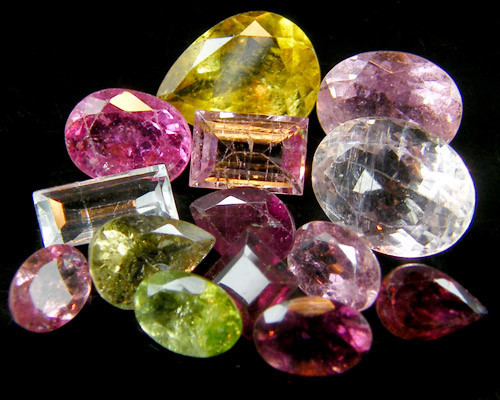

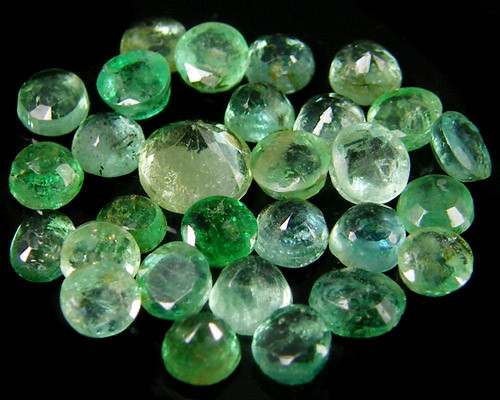
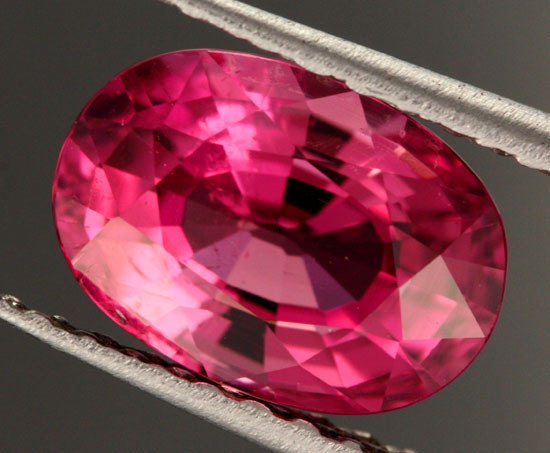

Ciao, mi chiamo Jodi e negli ultimi 4 anni ho scattato tra le 80.000 e le 120.000 foto di pietre preziose.
Cerco di ottenere foto di pietre preziose dall'aspetto più naturale possibile, con il minor numero di modifiche possibile, perché ritengo che troppe modifiche possano ingannare gli acquirenti online.
Le pietre preziose sono preziose perché sono belle, resistenti e rare.
Ecco perché vengono fotografati e, per me stesso, ecco perché mi diverto a scattare foto di questi splendidi esemplari.

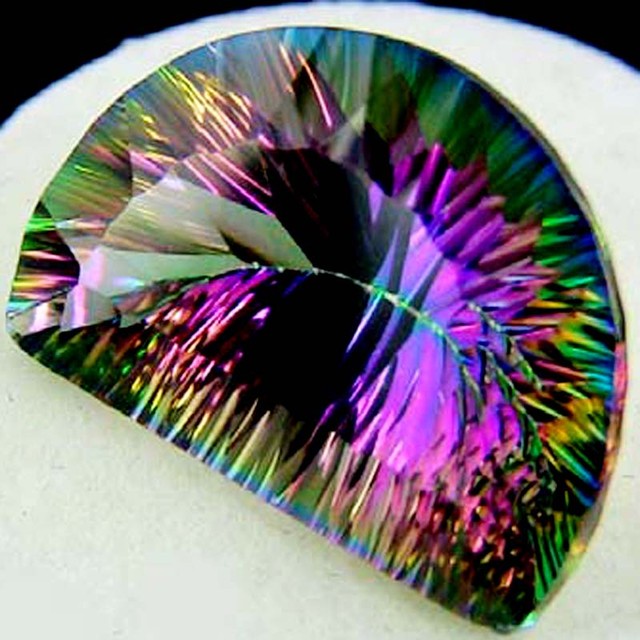
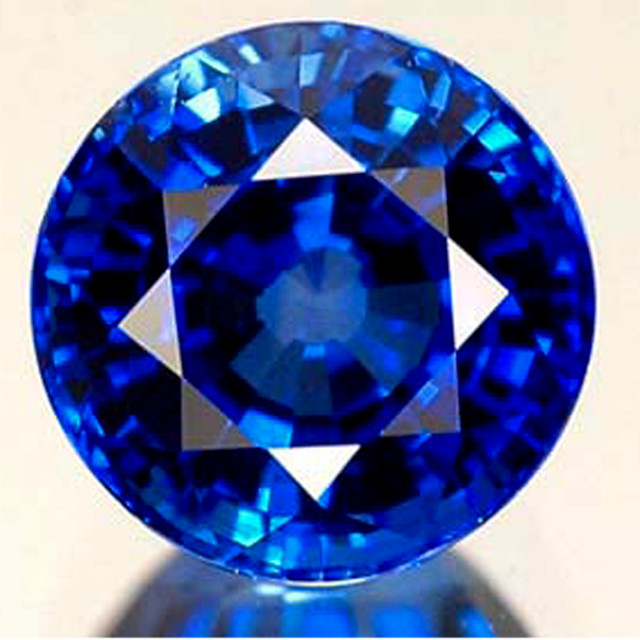
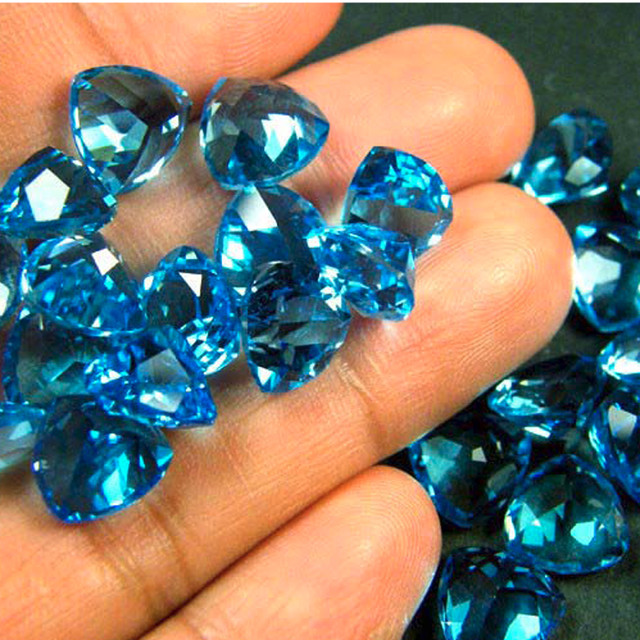
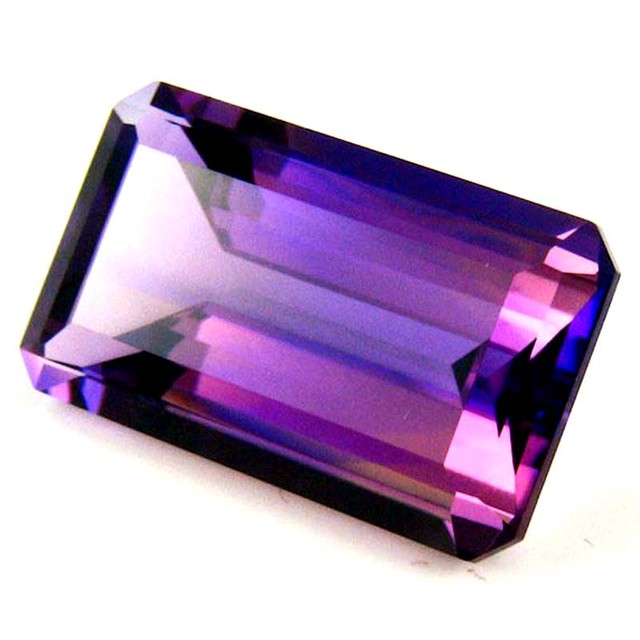

Per gli acquirenti online, credo che le foto servano allo scopo importante e prezioso di fornire un'illustrazione scientifica dignitosa, poiché la pietra deve essere ritratta in modo completo e accurato, e anche di valorizzare le qualità estetiche, poiché la fotografia prende vita con brillantezza e profondità. I fotografi di pietre preziose come me utilizzano molte tecniche e processi che possono essere appresi e personalizzati in base alle proprie capacità e competenze. Continuate a leggere per scoprire la mia visione sulla fotografia di gemme, poiché fattori come il tipo di gemma, l'illuminazione, la fotocamera, lo sfondo e l'attrezzatura giocano un ruolo importante nella produzione di gemme naturali e dall'aspetto meraviglioso.

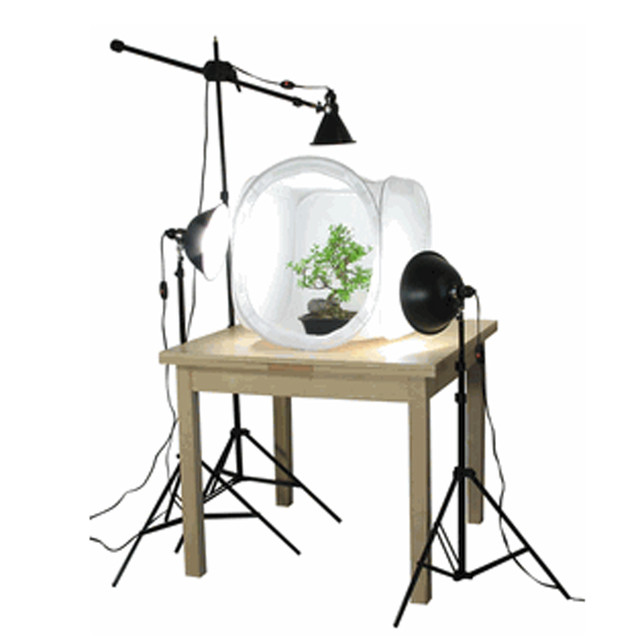


Penso che come acquirente online dovresti essere consapevole perché sono molti i fattori, anche minimi, che possono modificare anche di poco l'aspetto della pietra.
Personalmente, credo che alcune delle migliori offerte online siano dotate di foto di bassa qualità scattate da fotografi amatoriali. Anche se le foto non sono così professionali, la pietra preziosa è in realtà di qualità migliore di quanto sembri. Ho anche scoperto, attraverso la mia esperienza fotografica, che le inclusioni sono ingrandite nelle foto, rendendola meno fedele alla sua forma, nonostante la gemma sia effettivamente pulita alla vista. Un buon indicatore per un acquirente per trovare venditori di qualità è il feedback e i commenti. Ogni articolo venduto da un venditore richiede un feedback da parte dell'acquirente, quindi il feedback vi informerà sul numero di vendite effettuate dal venditore e su eventuali commenti riguardanti l'articolo. In questo modo, potete verificare personalmente se un venditore ha foto di qualità eccezionale ma ha un numero basso di feedback totali e una gamma ristretta di acquirenti. Questo può indicare che lo stato naturale della pietra potrebbe essere di bassa qualità per il venditore. Personalmente, posso collegare le immagini ai feedback; in questo modo, potete indicare la vera qualità delle pietre verificando se i feedback di un venditore hanno acquirenti abituali.
Fonti e tecniche di illuminazione
Le due principali categorie di illuminazione sono:
1. Luce solare naturale e
2. Luce artificiale
Entrambe producono luce con temperatura di colore variabile. Personalmente, utilizzo due lampadine fluorescenti in una lampada da scrivania per catturare quanta più luce possibile intorno alla pietra, ma è anche possibile utilizzare una tenda luminosa intorno alla pietra per diffondere la luce, poiché potrebbe causare una luminosità troppo intensa nella foto. È una questione di equilibrio tra tutti gli elementi della fotografia per creare pietre dall'aspetto naturale. La luce solare è la fonte di illuminazione più economica, in quanto gratuita. Tuttavia, presenta alcuni svantaggi: con il passare del giorno, anche la temperatura di colore dell'illuminazione cambia. La temperatura di colore della luce solare dipende dalle condizioni meteorologiche: che sia nuvoloso o soleggiato, è difficile mantenere una resa cromatica costante e accurata utilizzando la luce solare. Anche l'uso della luce solare diretta produce un risultato troppo intenso, poiché crea ombre profonde e un contrasto elevato.
L'illuminazione artificiale è diventata la fonte più diffusa per una rappresentazione costante e accurata della temperatura colore. I due tipi di illuminazione artificiale sono: a incandescenza e a luminescenza. L'illuminazione a incandescenza più utilizzata è la lampadina al tungsteno, generalmente presente nelle lampade da scrivania. Le luci luminescenti più utilizzate per la fotografia sono le lampadine fluorescenti e le luci a LED.
 Immagine: Pietra di smeraldo esposta alla luce diretta del sole di mezzogiorno
Immagine: Pietra di smeraldo esposta alla luce diretta del sole di mezzogiorno
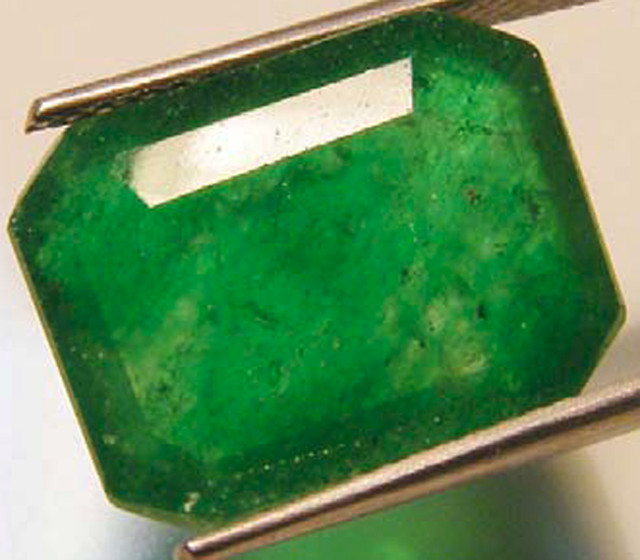
Immagine: Pietra di smeraldo sotto luce al tungsteno
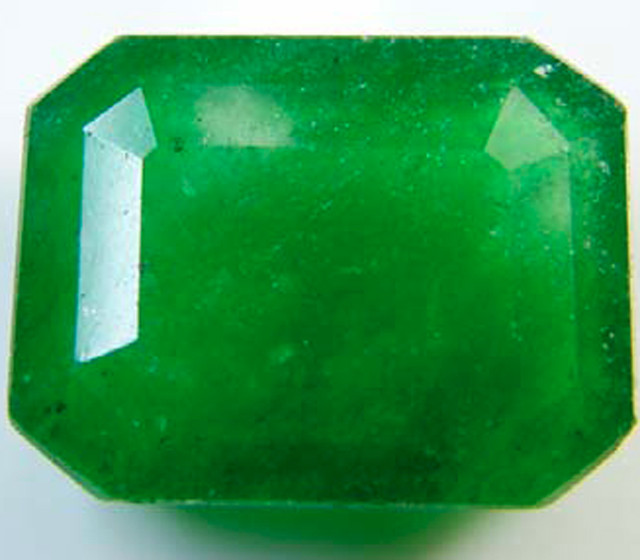
Immagine: Pietra di smeraldo sotto luce LED

È possibile utilizzare anche il flash della fotocamera. Questo tipo di flash produce un rapido lampo di luce intensa che varia a seconda dell'impostazione. Tuttavia, un'impostazione troppo intensa, come si può vedere nelle foto qui sotto, sbiadisce la forma e il colore della pietra. Personalmente, non uso il flash proprio per questo motivo.
Un'altra immagine comparativa di Ametista con e senza flash:
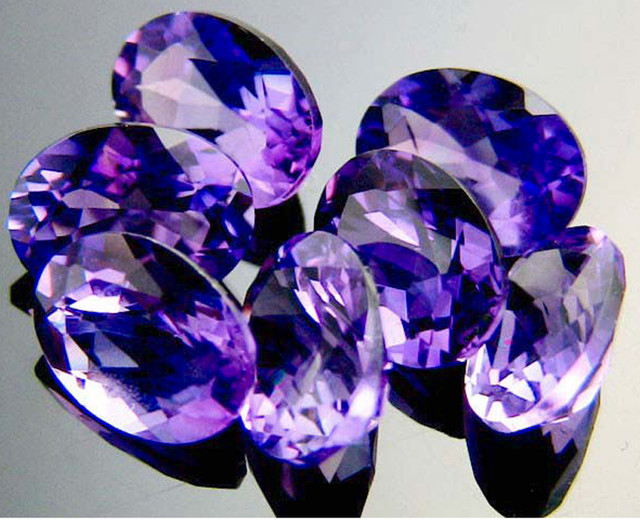
Immagine: Ametista senza flash
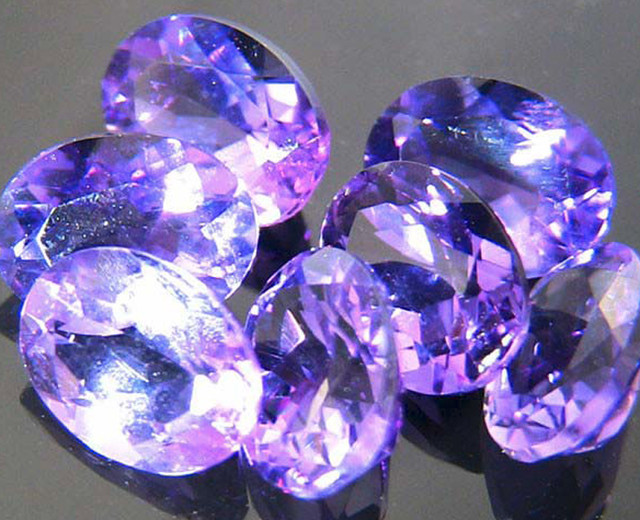
Immagine: Ametista con flash
Tecniche di illuminazione:
Personalmente, ritengo sia importante bilanciare l'illuminazione per rappresentare accuratamente la gemma, poiché i suoi angoli e la sua posizione possono determinare il controllo e l'enfasi della gemma. Fattori importanti per l'illuminazione sono: a) Luce riflessa dalla superficie b) Luce riflessa dalla struttura interna o dal "colore del corpo" della gemma c) Luce introdotta dal retro della gemma
UN) 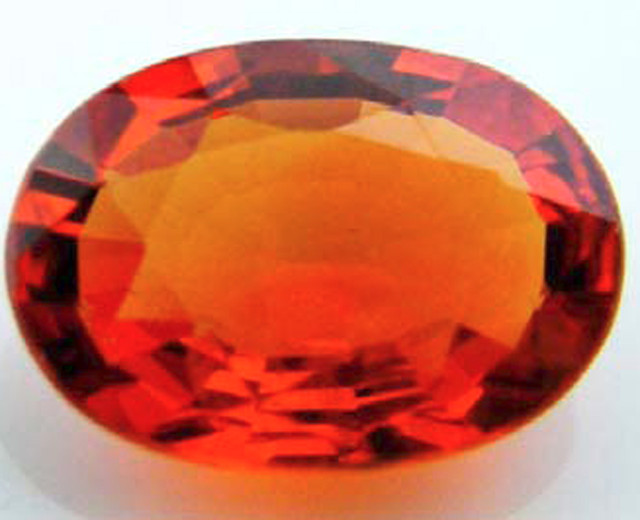 B)
B) 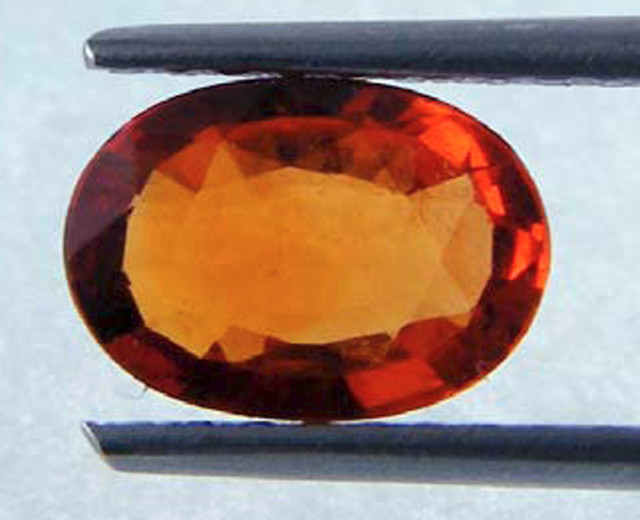 C)
C) 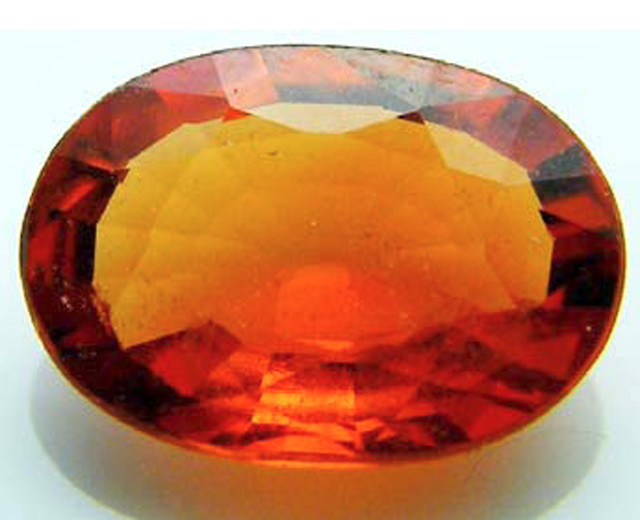
Spiegazione delle immagini a, b e c:
a) La luce riflessa dalla superficie offre una buona prospettiva del colore e delle sfaccettature della gemma, dando nel complesso una buona impressione della gemma. Questa foto è stata semplicemente ritagliata.
b) C'è un'illuminazione interna che proviene dalla parte inferiore della gemma. In questo caso specifico, la vera bellezza non è messa in risalto.
c) La luce proviene dal retro della gemma. Dall'angolazione da cui proviene, la luce non viene riflessa molto bene attraverso le sfaccettature, come si può vedere dalla vista frontale.
Personalmente, cercherei di bilanciare la quantità di luce che illumino la pietra, perché a volte troppa luce rovina la foto. Bilancerei anche gli angoli di luce fino a ottenere l'effetto desiderato che giustifichi il suo splendido colore, la sua forma e le sue sfaccettature.
Tecniche di sfondo:
Lo sfondo per le pietre preziose dovrebbe essere semplice e lineare, per non distogliere l'attenzione dalla pietra. Consiglio di utilizzare 4 sfondi diversi: uno sfondo acrilico bianco e nero, un piccolo specchio o anche la mano. È importante rendersi conto che alcune pietre preziose si abbinano a uno sfondo specifico, in base al colore della pietra. Io uso spesso uno sfondo acrilico bianco e nero, perché crea un riflesso dall'aspetto professionale e allo stesso tempo crea uno sfondo pulito e ordinato. È meglio provare tutte e 4 le opzioni di sfondo per vedere quale si adatta meglio alla pietra. Di seguito è riportato un esempio di una gemma su tutti e 4 gli sfondi. I risultati non sono modificati, anche se ritagliati, e come potete vedere, ogni sfondo produce un effetto diverso sulla pietra. Come venditore, dovete scegliere le foto più accurate per mostrare la pietra nel suo stato più naturale.
Topazio dorato su sfondo bianco


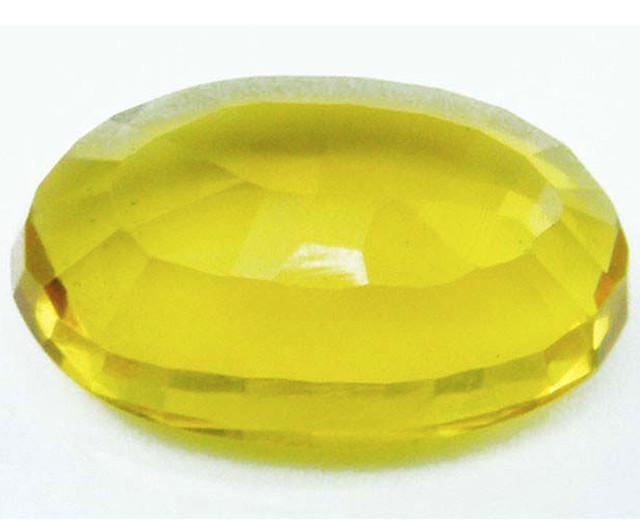
Topazio dorato su sfondo nero
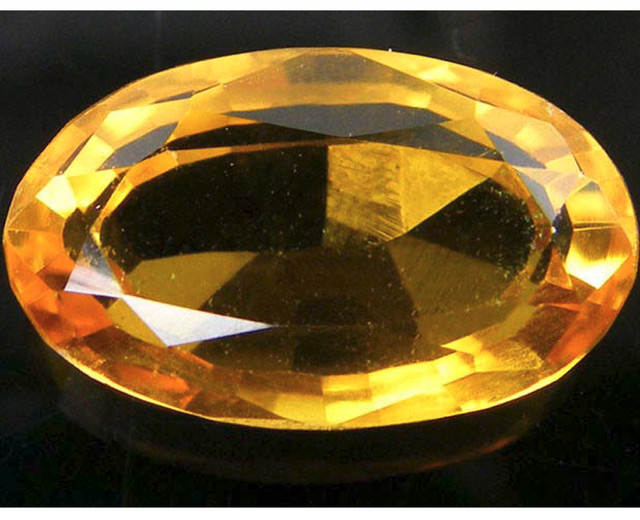
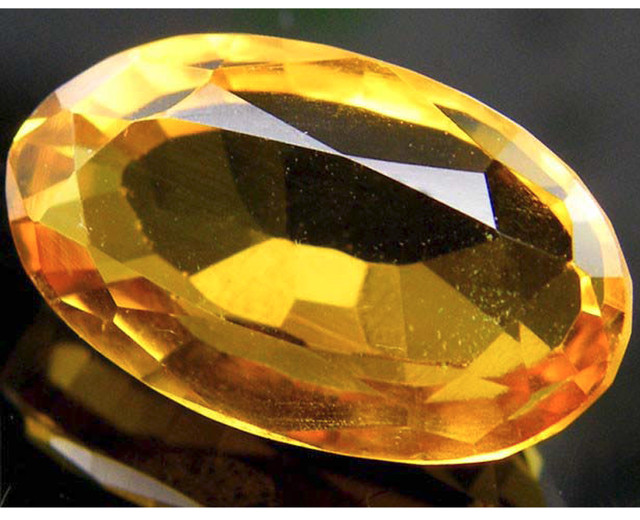

Topazio dorato sulla mano

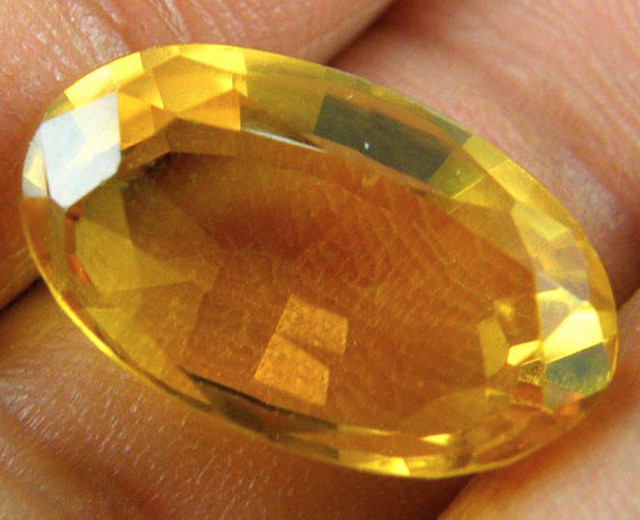

Software di editing:
Esistono molti software di fotoritocco sul mercato, ed è davvero facile esagerare. Bisogna tenere presente che la maggior parte dei software è molto costosa, con prezzi che vanno dai 299 agli 800 dollari per Adobe Photoshop. Io uso Adobe Photoshop 6.0, una delle versioni più vecchie in circolazione! Ma non importa quanto sia avanzato il software, non dovresti dover fare troppe modifiche, basta ritagliare la foto e salvarla! L'obiettivo è mostrare la pietra nel suo stato più naturale possibile, poiché troppe modifiche al colore o qualsiasi altra forma di modifica possono essere ingannevoli. La modifica del colore può essere poco veritiera, poiché si può rendere la pietra più scura o più chiara di quanto non sia in realtà, aumentandone il valore. Inoltre, la modifica può nascondere la pietra dal suo stato reale. Quello che voglio dire è che ci sono molte pietre riempite di vetro e altre forme di miglioramento sul mercato, questo, unito a un'eccessiva modifica, farebbe sembrare queste pietre troppo belle per essere vere!
Ad esempio, le prime tre foto di un Rubies qui sotto sono state modificate pochissimo, se non per niente.
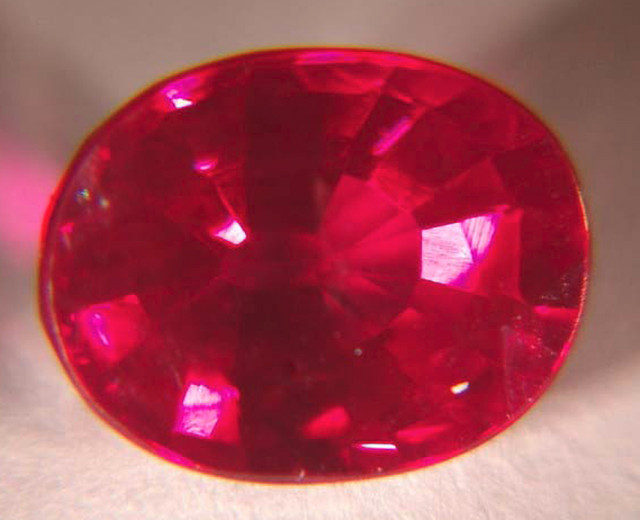
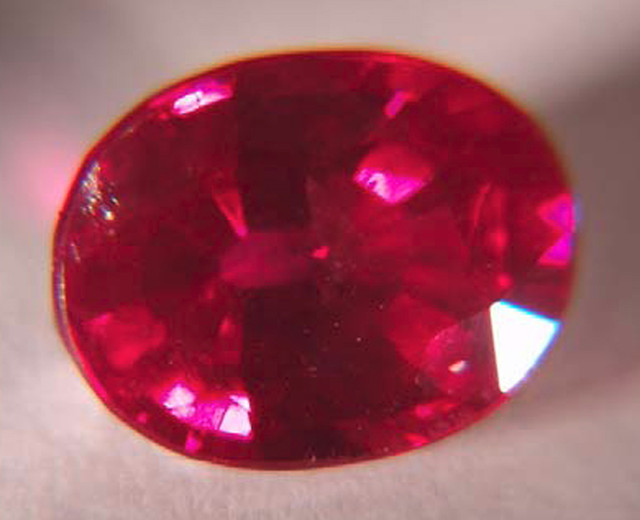
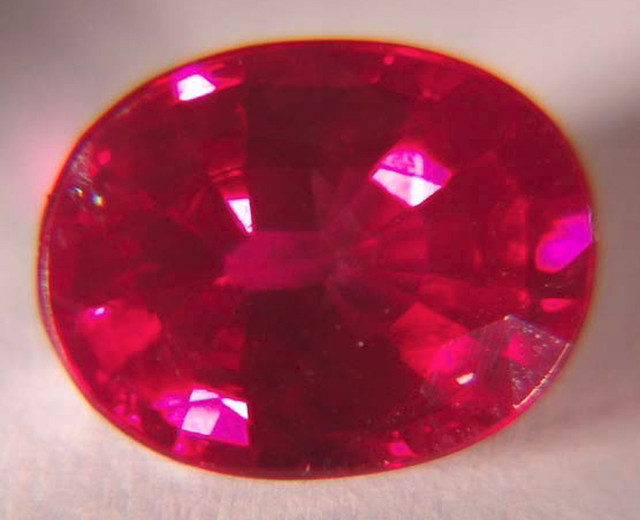
Tuttavia, la stessa identica pietra con due foto modificate da professionisti mostrate di seguito, non sembra quasi la stessa.


In una giornata normale, riesco a scattare circa 100 foto, modificarle e pubblicarle. In realtà, scattare 2-3 foto, modificarle e pubblicarle dovrebbe richiedere solo 7-10 minuti per pietra. Tuttavia, si trovano siti irrealistici con foto incredibilmente irrealistiche, che probabilmente impiegano fino a ore per modificare una foto nella sua versione migliorata. Potresti trovare venditori con scarse competenze fotografiche, ma le loro pietre sono in realtà più naturali e di qualità migliore rispetto alle pietre eccessivamente modificate, e inoltre i prezzi sono probabilmente convenienti!
Telecamera:
Di nuovo, puoi davvero esagerare e spendere troppo per una macchina fotografica professionale. Personalmente uso una fotocamera digitale Fujifilm FinePix S8000fd con zoom ottico 18x, il cui prezzo di vendita consigliato è di $ 399.

Potrebbe essere un buon investimento a lungo termine acquistare una fotocamera dal prezzo ragionevole con un buon zoom ottico, poiché le pietre preziose sono piccole e richiedono una maggiore nitidezza nelle foto rispetto a quella che una normale fotocamera economica può offrire. La mia fotocamera offre uno zoom ottico 18x, che mi consente di ottenere foto zoomate di buona qualità. Tuttavia, potrebbe essere necessario informarsi prima di acquistarne una. Di seguito è riportato un confronto tra una fotocamera digitale FinePix con zoom ottico 18x e una fotocamera digitale Coolpix con zoom ottico 3x.
Pietre preziose di peridoto con la FinePix Pietre preziose di peridoto con una Coolpix
Fotocamera digitale con zoom ottico 18x Fotocamera digitale con zoom ottico 3x


Come puoi vedere, maggiore è lo zoom ottico, più nitida sarà la foto. Con lo zoom ottico 18x, puoi vedere più nitidezza nei dettagli della pietra, rispetto allo zoom ottico 3x, che mostra una maggiore sfocatura.
Gemma:
La qualità della gemma ha sicuramente un impatto importante sull'aspetto fotografico. Un aspetto importante per i venditori è che, quando si acquista una pietra preziosa, la qualità della foto può essere ottenuta solo in combinazione con la qualità della gemma. Se la gemma presenta numerose inclusioni, ovvero le inclusioni sono visibili a occhio nudo, ciò può influire negativamente sulla qualità della foto. Non si desidera nascondere eventuali inclusioni modificando la foto, poiché ciò può portare a controversie e alla restituzione del prodotto quando gli acquirenti ricevono l'articolo e ne vedono la reale qualità. Questo può anche portare a feedback negativi da parte degli acquirenti sulla vostra affidabilità e fiducia come venditori.
————————————————————————————————————————————————————
————————————————————————————————————————————————————
Colore, taglio, chiarezza e peso
Colore, taglio, purezza e peso sono tutti fattori chiave nell'acquisto di una pietra preziosa. In questo articolo approfondiremo questi concetti e molto altro. Quando si acquista una gemma, il colore gioca un ruolo importante. Il colore dipende dalla composizione chimica della gemma, dal taglio, dalla forma, dalla purezza e da molto altro!
Colore
Il colore è solitamente la prima cosa che un acquirente guarda. Il colore da solo non rende una gemma desiderabile, come imparerai; anche la purezza, il taglio e il peso in carati entrano in gioco. Online, una foto della gemma è tutto ciò che vedrai, quindi una buona descrizione che accompagni la foto è il modo migliore per acquistare la tua gemma.
Innanzitutto, è necessario comprendere che il colore richiede l'interazione tra la luce e l'osservatore. Tonalità, tono e saturazione permettono di vedere il colore desiderato. La tonalità è la prima impressione di base del colore di base, il tono è l'oscurità del colore e la saturazione è l'intensità del colore.
Il colore è importante in qualsiasi gemma, quindi quando ordini dal negozio che hai selezionato su Gemrock, la tua conoscenza delle gemme ti aiuterà a trovare la gemma che desideri. Ogni gemma ha una chimica e una struttura uniche che contribuiscono al colore unico della sua pietra. Ad esempio, il rubino e lo zaffiro sono entrambi varietà del corindone. L'aggiunta di un "ingrediente" di cromo crea tonalità rosse che classifichiamo come rubino.
La presenza di ferro e titanio, tuttavia, genera sfumature blu nello zaffiro. Ogni gemma che abbiamo imparato ad amare presenta variazioni di colore dovute a variazioni chimiche in ogni specie o gemma! Variazione di colore: molti clienti si aspettano di vedere un colore uniformemente distribuito in tutta la gemma che acquistano, ma molte gemme presentano più di un colore e riflettono la luce in modo diverso in tutta la loro struttura. Tutto ciò è dovuto alla composizione chimica della gemma. Zonatura di colore: c'è una ragione per la zonatura di colore nelle gemme. La crescita minerale non è mai fluida. Le condizioni di crescita cambiano, ad esempio una tormalina anguria può essere rosa da un lato e verde dall'altro, questa è una zona di colore desiderata.
Altre gemme potrebbero presentare zone di colore indesiderate; a volte un tagliatore può mascherare tale zona, ma non sempre è possibile. Potresti vedere uno zaffiro blu incolore su un'estremità, il che potrebbe rovinarne l'aspetto. Considera il tipo di gemma che stai acquistando quando vedi zone di colore o un aspetto bicolore. Come affermato, la zonatura del colore può o meno aggiungere valore a una gemma.
Il colore appare diverso in base all'illuminazione
Perché i rubini appaiono così splendenti alla luce delle candele? Perché la carnagione chiara di una donna brilla come l'oro quando si trova su un molo al tramonto?
Le risposte hanno tutte a che fare con il modo in cui diverse fonti di luce influenzano il colore. In generale, ogni pietra preziosa appare diversa a seconda della fonte di luce. Le gemme verdi, blu e viola sono al meglio sotto l'illuminazione fluorescente presente nella maggior parte degli uffici. Questo perché la luce fluorescente in genere emette molto blu o verde, il che esalta i colori di queste gemme. Le gemme rosse, arancioni e gialle mostrano i loro colori al meglio sotto la luce incandescente, come quella di una candela, di una lampada tradizionale o i raggi del sole al tramonto. Le fonti di luce incandescente emettono onde luminose principalmente di colore rosso, arancione o giallo, enfatizzando i colori di queste gemme.
Ricordare che l'illuminazione influisce sull'aspetto dei diversi colori ti sarà utile quando acquisterai gemme online. È inoltre molto importante ricordare che ogni computer ha impostazioni diverse e potrebbe visualizzare il colore di una gemma in modo leggermente diverso, quindi leggi le descrizioni o chiedi al venditore informazioni sul colore. Potresti anche dover sapere che molte fotocamere utilizzano flash UV e altri tipi di illuminazione che possono far sì che il colore vari leggermente rispetto alla gemma reale.
Quindi ho detto: "Le domande non sono mai irragionevoli, una foto vale più di mille parole, ma una domanda può rispondere alle tue preoccupazioni". Non tutti i venditori sono in grado di investire tempo e denaro in una microcamera o in altre tecnologie molto costose utilizzate dalle grandi aziende. Dovresti anche considerare il "COLORE PREGIATO", il colore nella gamma cromatica di una pietra preziosa considerato dal settore il più desiderabile.
La scelta finale dovrebbe determinare il colore. Ciò che l'industria seleziona non è sempre lo stesso che potresti scegliere per il colore della tua gemma. La GAMMA COLORI è la selezione del colore in cui si presenta ogni gemma; il colore può giocare un ruolo importante sul valore di una gemma. Una tanzanite di colore "AAA" intenso con una tonalità blu scuro/viola varrà molto di più di una gemma di tanzanite di colore lilla chiaro nella maggior parte dei casi. Ci sono altri fattori da considerare, ma il colore è una componente chiave.
Il pleocroismo si verifica quando una gemma mostra colori del corpo diversi da una direzione diversa. Ancora una volta, possiamo usare la tanzanite come esempio: una tanzanite di prima qualità può apparire viola/blu da un'angolazione diversa o viola da un'altra. La tormalina può apparire verde scuro da un lato, ma molto più chiara da un altro.
Capire i colori delle pietre preziose può aiutarti ad acquistare la gemma perfetta! I colori che vedrai nelle tue gemme non sono dovuti solo alla composizione chimica, ma anche al taglio, alla purezza e ad altri fattori che ti aiuteranno a scegliere la gemma giusta.
Termini chiave:
Gioco di colori, i colori arcobaleno scintillanti che si vedono nell'opale e in alcune altre gemme.
Aventurescene è l'effetto scintillante causato dalla luce riflessa da piccole inclusioni piatte all'interno di una pietra preziosa
Iridescenza: effetto arcobaleno creato quando la luce viene scomposta in tonalità spettrali da strati di oggetti.
La labradorescenza è un ampio lampo di colore nel feldspato labradorite che scompare quando la gemma viene spostata.
L'asterismo è l'incrocio di bande gatteggiamento che creano una stella nella cupola della gemma cabochon.
La gatteggiamento è la formazione di bande luminose in alcune gemme causate dalla riflessione della luce da parte di numerose inclusioni parallele aghiformi o tubi cavi.
Latte e miele è un effetto bicolore che si ottiene posizionando la gemma color miele ad angolo retto rispetto a una fonte di luce.
Il cambiamento di colore osservato nell'Alessandrite è un cambiamento molto particolare del colore della gemma sotto diversi tipi di luce. È molto raro.
Chiarezza
Una parte importante del valore di qualsiasi pietra trasparente è la sua purezza, che è una forma libera di imperfezioni e inclusioni. Un'IMPERFEZIONE è un'irregolarità confinata alla superficie di una gemma lucidata. Un'INCLUSIONE, invece, è racchiusa all'interno della gemma o raggiunge la superficie dall'interno. Quindi è importante conoscerne la differenza. Molte gemme sono classificate in base alle inclusioni interne alla gemma. Il difetto interno. Le pietre colorate presentano molti tipi di imperfezioni e inclusioni, con una varietà di effetti sull'aspetto e sulla durata della gemma.
Le imperfezioni sono irregolarità superficiali come graffi o scalfitture. Hanno un effetto minimo o nullo sull'aspetto della pietra preziosa e gli acquirenti devono comprendere, ancora una volta, che un venditore non può classificare una gemma in base a queste, ma solo in base alle inclusioni, a meno che non siano molto grandi o numerose.
Le inclusioni, d'altro canto, possono influenzare una gemma in molti modi. Le caratteristiche interne includono rotture, sacche di fluido, cristalli di minerali estranei. Imperfezioni e inclusioni sono chiamate CARATTERISTICHE DI PUREZZA.
A causa del modo in cui si formano le gemme, una forma completamente priva di inclusioni o imperfezioni è estremamente remota. Meno inclusioni ha una gemma, più è rara. E come puoi immaginare, meno inclusioni sono visibili, più è preziosa.
Quando si acquista una gemma, le inclusioni devono essere considerate come segue:
Dimensioni: le inclusioni grandi hanno più influenza delle inclusioni piccole.
Numero: In termini generali, più inclusioni ha una pietra, minore è la sua purezza. Ci sono delle eccezioni: una pietra può avere molte inclusioni minute e comunque essere in un punto elevato della scala di purezza per quella specie.
Posizione: le inclusioni al centro del tavolo sono solitamente più visibili di quelle sotto la lunetta o vicino alla cintura.
Colore e rilievo: le inclusioni di colore simile al colore del corpo della gemma non risaltano. Tuttavia, un'inclusione che contrasta con il colore del corpo della gemma, come un'inclusione rossa in una pietra di colore più chiaro, avrà un effetto maggiore.
Oltre all'aspetto, un'inclusione può influire sulla durabilità di una gemma. In molti casi, le inclusioni che ne compromettono la durabilità hanno un impatto significativo sul valore. Le rotture rientrano in questa categoria.
Solitamente solo poche gemme colorate sono prive di inclusioni: acquamarina, citrino, kunzite, tanzanite e topazio. Al contrario, la tormalina rossa e gli smeraldi presentano sempre una certa quantità di inclusioni.
Inclusione utile: ricorda che alcune inclusioni possono essere utili, inclusioni aghiformi come quelle che si vedono nelle gemme occhio di gatto o l'inclusione a coda di cavallo che si vede in un granato demantoide creeranno un valore tale che l'inclusione è il punto centrale della gemma!!
L'inclusione è utile perché ci aiuta a distinguere le gemme naturali da quelle sintetiche! Ogni gemma ha le sue caratteristiche, come una sorta di impronta digitale, e l'inclusione è un modo per identificarne la maggior parte.
Ciò che devi chiederti è: la gemma presenta inclusioni o rotture che ne comprometteranno la durevolezza? L'inclusione farà sì che il valore della tua gemma sia inferiore al costo medio? L'inclusione toglie bellezza alla tua gemma? Considera tutti questi aspetti quando osservi le inclusioni all'interno della tua gemma.
Taglio
Quando parliamo di taglio di una pietra lucidata, ci riferiamo a una delle due seguenti combinazioni: forma e stile oppure proporzioni e finitura. Dopo il colore, forma e stile sono solitamente le prime cose che notiamo in una gemma. La forma è la pietra con la faccia rivolta verso l'alto, il contorno. La forma rotonda è la più familiare. Tutte le altre sono generalmente classificate come forme particolari.
Tra questi, smeraldo, cuscino, ovale, pera, marquise e cuore. Lo stile è il modo in cui il tagliatore ha disposto le sfaccettature della pietra. La maggior parte delle gemme è sfaccettata in uno dei tre stili. La sfaccettatura del taglio a brillante (in alto) si irradia dalla tavola o dal culet fino alla cintura. Le sfaccettature del taglio a gradini (al centro) sono disposte in file concentriche.
Il taglio misto (in basso) combina una corona a taglio brillante con una base a gradini. Oltre a questi stili di base, i tagliatori possono creare innumerevoli varianti aggiungendo, sottraendo e riorganizzando le sfaccettature! Alcuni cristalli di gemme sviluppano forme e dimensioni tipiche che si prestano bene a determinati tagli. Ad esempio, il grezzo degli smeraldi si presta a stili di taglio rettangolare come il taglio smeraldo. Rubini e zaffiri con un peso superiore a un carato grezzo sono tipicamente tagliati con un taglio ovale o a cuscino. Un taglio di qualità aiuta una gemma a raggiungere il suo massimo potenziale di attrattiva.
L'obiettivo di un tagliatore è quello di mantenere il peso del grezzo, creando al contempo la gemma più attraente. Non tutte le gemme possono essere tagliate in modo tradizionale quando un tagliatore vuole mantenere il peso. Se si desidera realizzare una montatura speciale per la gemma, si otterrà un'opera d'arte. I tagli calibrati sono gemme che soddisfano le dimensioni standard di montatura; se le dimensioni di una gemma non si avvicinano nemmeno lontanamente a quelle standard, sarà necessario chiedere al gioielliere di regolare la montatura. Molte gemme di qualità superiore, come il rubino, di solito non vengono tagliate secondo le dimensioni standard del settore perché si perde troppo peso durante il taglio.
I tagli di design e i tagli fancy sono tagli artistici per gemme che normalmente non si adattano a montature di dimensioni standard, ma che possono comunque essere facilmente incastonati da un gioielliere esperto. Nella maggior parte dei casi, le pietre più piccole vengono tagliate in dimensioni standard, mentre le gemme più grandi vengono tagliate simmetricamente, se possibile, per evidenziare importanti fattori di valore.
Non dimenticare che una montatura standard può solitamente essere adattata per contenere la gemma dei tuoi sogni; le gemme di dimensioni irregolari, al limite superiore della scala di qualità e valore, spesso richiedono e ottengono montature personalizzate!
Peso in carati
L'industria orafa mondiale utilizza il carato metrico (abbreviato in ct). Un punto equivale a 0,01 carati, quindi la tua gemma potrebbe pesare 7,96 ct. È importante ricordare che, sebbene il peso in carati sia un fattore di valore, non è il fattore decisivo né per la qualità né per la bellezza.
Una gemma da 1,00 carati può essere bella quanto una splendida pietra da 10,00 carati, se non altrettanto spettacolare. Tutto dipende dalla singola pietra e dalle preferenze del cliente. Quotazioni del peso - I venditori spesso indicano il peso in carati in intervalli, usando frazioni come un quarto di carato o mezzo carato come riferimenti generali.
Ma un grossista che offre un Una gemma da 0,27 ct può essere offerta come un quarto di carato. Nelle conversazioni informali tra venditori, una pietra da un quarto di carato può pesare tra 0,23 e 0,29 ct, ma nelle presentazioni di vendita il venditore deve fare molta attenzione a usare frazioni come un quarto o una metà. È necessario conoscere il peso esatto o entro 0,01 - 0,02 ct, molte bilance differiscono di tale importo; se il venditore utilizza una buona bilancia, normalmente si avrà un'approssimazione di 0,01 o il peso esatto. L'accuratezza è fondamentale anche quando si descrive il peso totale di una gemma.
Questo serve a evitare qualsiasi tipo di confusione da parte del cliente, quindi se non capisci il peso, chiedi! In genere, troverai diversi venditori di pietre preziose che ti piacciono e di cui ti fidi, quindi dovresti poterti fidare del peso indicato. Un grossista può fornire prezzi in due modi: per pietra o per carato.
Il prezzo della pietra è il prezzo totale per pietra. Il prezzo in carati sarà per carato: se la gemma viene venduta a 50,00 dollari al carato e si acquista una gemma da 3 ct, si pagherà $ 150,00. Peso e valore: alcune gemme sono normalmente disponibili in dimensioni più piccole. I rubini grezzi di qualità gemma, come l'Alessandrite, sono buoni esempi di gemme che sono in genere più piccole di una dimensione di 4 ct.
Altre gemme come l'acquamarina e il citrino, o l'ametista e il topazio, si presentano in cristalli molto grandi, fino a 100 carati. Con queste gemme, di solito, il prezzo al carato aumenta poco o per niente con le dimensioni. Un'ametista da 4 carati costa in genere il doppio di un'ametista da 2 carati. Il prezzo di un rubino da 1 carato e di un rubino da 3 carati può variare notevolmente a seconda del valore della gemma. PESO VS. DIMENSIONE - Potresti avere due gemme di dimensioni simili, ad esempio un'acquamarina e un topazio blu delle stesse dimensioni offriranno un topazio con un peso maggiore rispetto al peso dell'acquamarina. Nello stesso scenario, uno zaffiro da 1 carato e una iolite da 1 carato che pesano lo stesso avranno dimensioni diverse... quindi fai attenzione quando cambi le pietre dalle montature.
Peso e dimensioni variano da pietra a pietra. Ora che ti rendi conto che devi considerare una gamma di COLORI quando scegli una pietra preziosa, dovrai considerare la purezza della gemma, il taglio e il peso. Alla fine, la scelta spetta a te, la scelta del colore è una decisione personale. Ma la purezza della tua gemma è importante. Anche il taglio sarà importante; la gemma che scegli dovrebbe avere proporzioni e design gradevoli.
Un taglio scadente è facilmente visibile attraverso la finestra o le macchie scure di una gemma. Una bella gemma con una bella brillantezza catturerà l'attenzione di qualsiasi amante delle gemme. Infine, è meglio affidarsi a un venditore di cui vi fidate e con cui avete già collaborato in precedenza. Su Gemrock i venditori sono tenuti a rispettare le normative del sito. Se avete domande, chiedete al vostro venditore: dovrebbe essere in grado di rispondere a quasi tutte le vostre domande sulla gemma in vendita.
Se ritieni che le informazioni fornite non siano sufficienti, sono sicuro che il tuo venditore sarà lieto di fornirti l'assistenza di cui hai bisogno. La maggior parte è disponibile ad aiutarti con le montature, se richiesto, o con gemme su ordinazione. Un venditore affidabile e verificato è un ottimo premio!
Karen Del Gaudio

ACQUISTA PIETRE PREZIOSE SFACCETTATE
Cerca il Gemstone Encyclopedia
Aste correlate
articoli Correlati
I cristalli Super Seven (pietre della melodia) sono gemme curative molto apprezzate, contenenti quarzo, ametista, goethite, rutilo, lepidocrocite, cacoxenite e quarzo fumé. Scopri le loro proprietà, i benefici e i prezzi!
9th May 2018
Il granato grossularia è una specie di granato comunemente verde, con varietà popolari come l'essonite e la tsavorite. In questa guida, approfondiremo il significato, i prezzi, la storia e le proprietà del granato grossularia.
5th Feb 2019
Il Rubino Sunrise stabilisce un nuovo record mondiale per un Rubino all'asta Sotheby's di Ginevra. Batte il record sia per il prezzo totale che per quello al carato.
18th Oct 2018
Articoli Recenti
Le pietre a forma di fiore di crisantemo sono meraviglie naturali caratterizzate da un motivo floreale di calcite bianca, celestina o andalusite incastonato su calcare nero o argillite.
13th Jan 2026
La pietra del sole a reticolo arcobaleno è una varietà di feldspato con tre splendidi effetti ottici dovuti alla presenza di varie inclusioni. La sua colorazione infuocata e il suo motivo a reticolo la rendono una gemma rara da collezione!
12th Jan 2026
La tulite è una rara pietra preziosa norvegese dalla vivace tonalità rosata, appartenente alla famiglia dei minerali della zoisite, comunemente utilizzata in montature e pendenti per gioielli.
6th Jan 2026
Categorie di articoli
How To's is where you will find helpful articles from gem Rock Auctions on how to cut gemstones, select gemstones and buy gemstones.
9 Articoli





